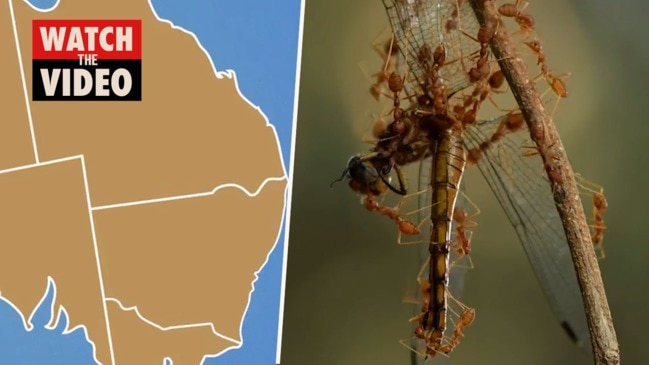Fire ants go marching on in Logan after 2017 Cyclone Debbie flood; Canterbury College cancels sports day
The cancellation of sports days at a southside college has thrown a spotlight on the fire ant march across southeast Queensland. But now many property owners say they are fighting a losing battle to eradicate the pest.

Logan
Don't miss out on the headlines from Logan. Followed categories will be added to My News.
THE devastating 2017 flood which inundated many Logan properties and homes, is being blamed for an unpatrolled spread of fire ants across southeast Queensland.
Rural properties south of Brisbane, along the Logan River, have become hot spots for the pest.
In April, Waterford’s Canterbury College was forced to reschedule its sports days due to fire ants on its playing fields. The college said Biosecurity Queensland was called and treated nests at the school.
Building sites infested as fire ant program fails, says expert
Part of Runaway Bay soccer field closed off after fire ant nests discovered
Dogs used to paws fire ant march
The college said Biosecurity Queensland was called and treated about 20 nests at the school.
The sports day cancellation led to claims last month by Logan City councillors that the Logan had lost its battle with the pest.

But horse breeder Sharyn Ruskey-Fleming gave some hope the infestation was slowly being addressed.
She said her Logan Village property was now receiving Biosecurity Queensland treatment despite more than two years of persistent requests for action to stop nests spreading.
She also told of the sad story of a young calf at a Logan Village farm having to be put down after it was bitten in the eye.
Ms Ruskey-Fleming said her land was first seriously affected after the flood, even though the first fire ants to her property arrived in bales of hay from a local supplier.

She said within a year the number of nests had ballooned from six to more than 600.
“After the flood was the time to act but nothing happened and that’s when I noticed the nests multiply,” she said.
“It’s a shame because if something had been done at the start immediately after the flood, we would not be having to treat thousands of these nests now.”
Last month, Logan City Council altered its Fire Ant Policy to allow council officers to take immediate action but only in “emergency” situations.
Officers were told they would now be allowed to treat nests, without supervision from Biosecurity Queensland, but only if the nest was on council-controlled property where a council event was to be held and there was the likelihood someone would get bitten.
DELAYS OVER FIRE ANT TREATMENT
At the time, Cr Jon Raven slammed Biosecurity Queensland officers for failing to act and said he believed Logan had lost the battle with fire ants, a complaint backed by Cr Laurie Koranski.

“When there are fire ant nests on the side of the road, on footpaths, like one on Haig Rd, Loganlea, council is not allowed to act,” he said.
“That’s where we are being let down. By the time someone comes out to treat the nest it has spread.
“I want Biosecurity Queensland to focus on Logan because Cyclone Debbie and the flood waters moved soil everywhere which is when the fire ants got out of control.
“Before the cyclone, they were an issue on some rural properties but after Debbie it got bad for both suburban and rural properties.”
Biosecurity Queensland said its officers responded to fire ant complaints in Logan as they arose and said it had responded to “a number” of nests after the 2017 flood.
However, a spokesman said Logan was not the focus for the department’s most intense baiting programs which were being concentrated at Ipswich, where it had kicked off its $411 million, 10-year eradication program.
“Our teams recently conducted compliance checks at infested properties in the Logan City Council area where hay or manure was a potential risk and it was confirmed that these materials were not being moved offsite,” Biosecurity Queensland said.

“We know that fire ant infestations can occur following major rainfall and flooding.
“We rely on landowners to immediately report any infestation on riverbanks and flood prone areas so they can be treated.
“Our data also shows there are multiple high-density infestations directly associated with new development sites.”
Biosecurity Queensland will continue to move east from Ipswich to the Logan-Gold Coast corridor and Redland, which is also infested.



